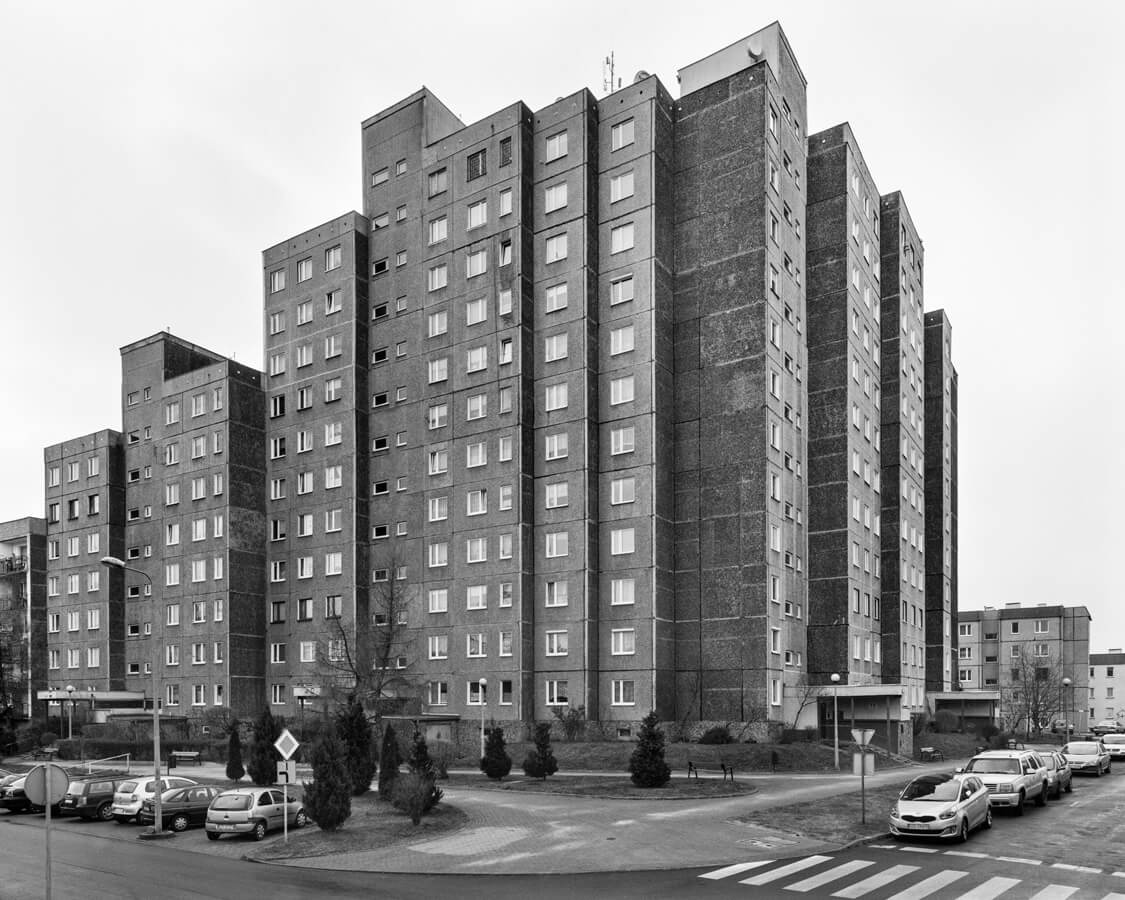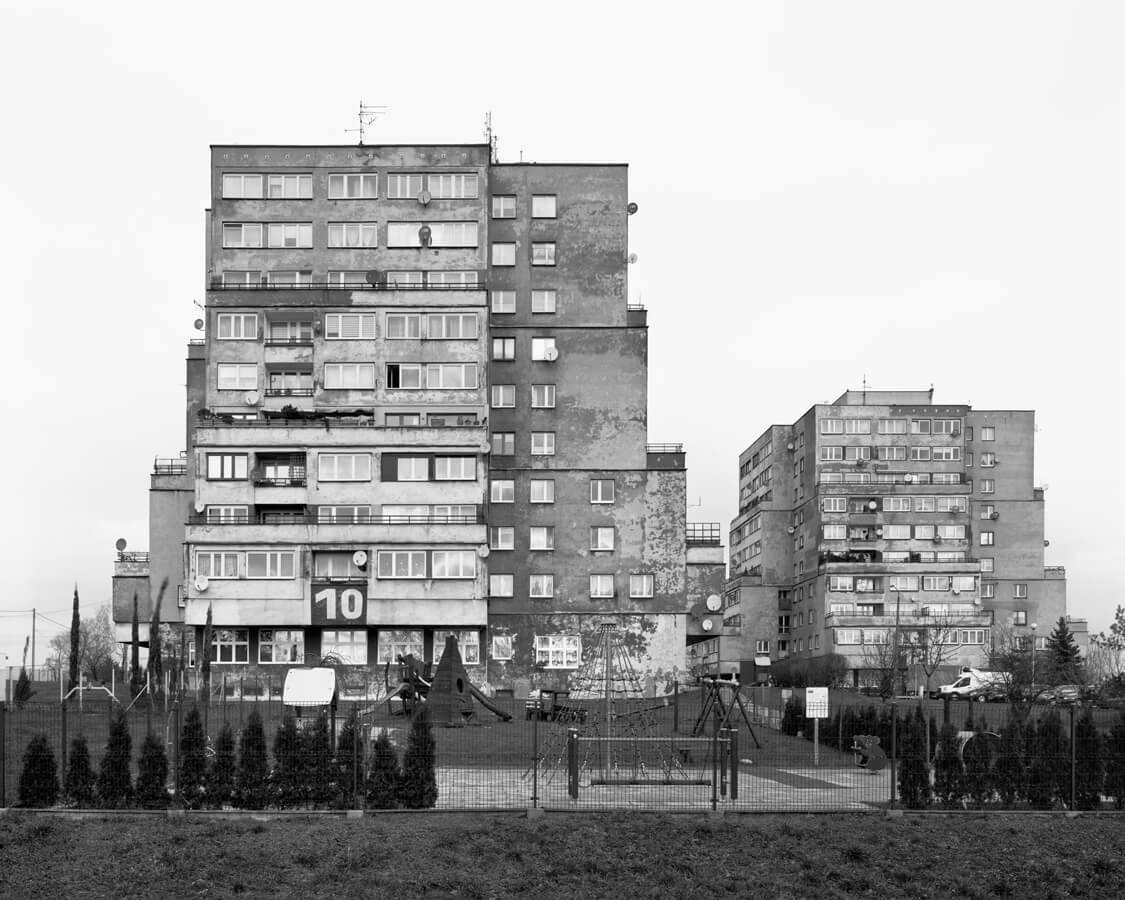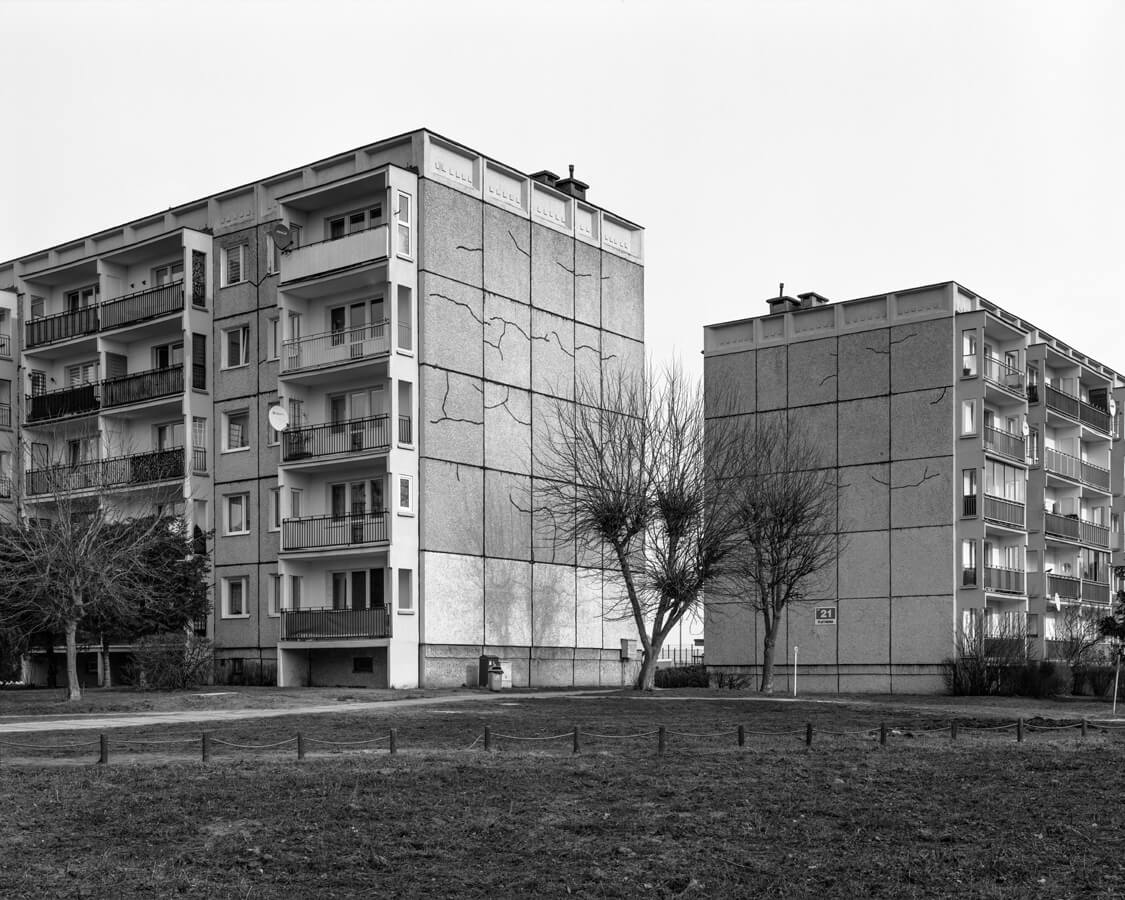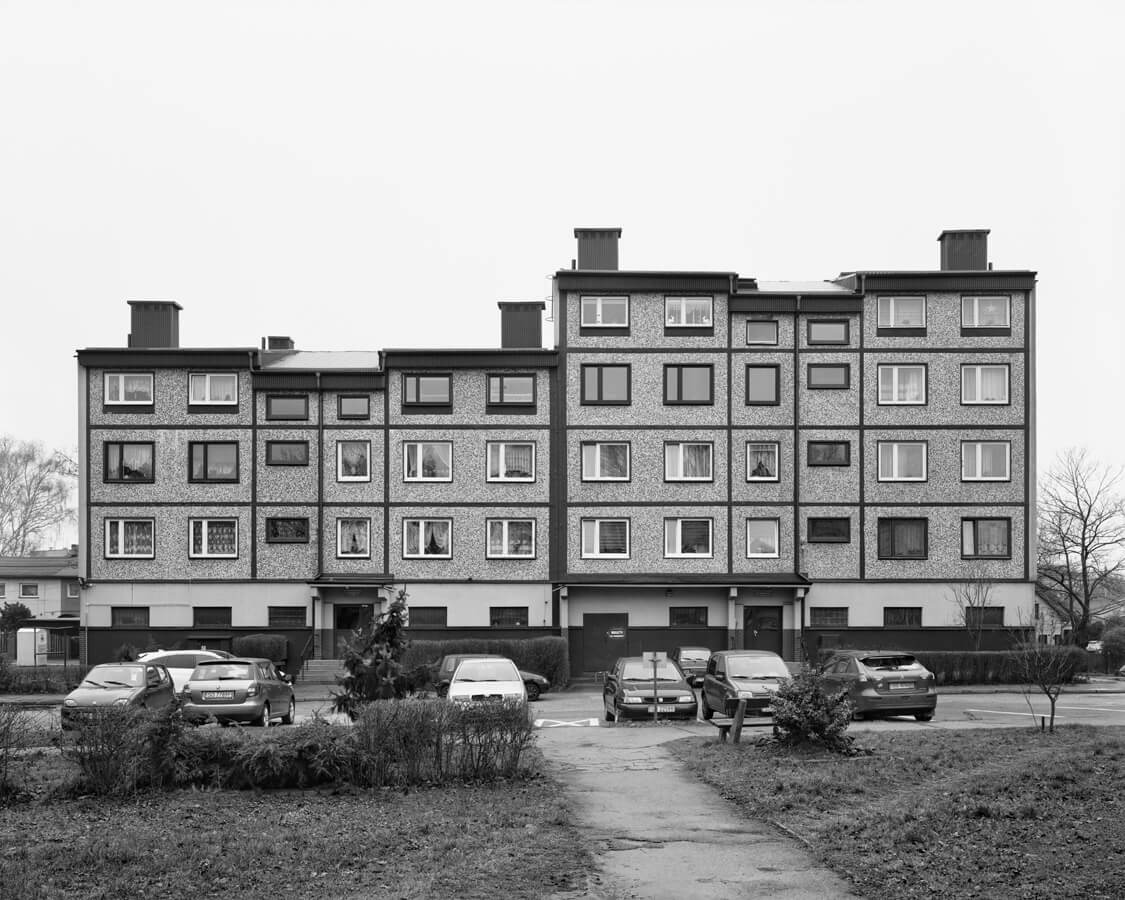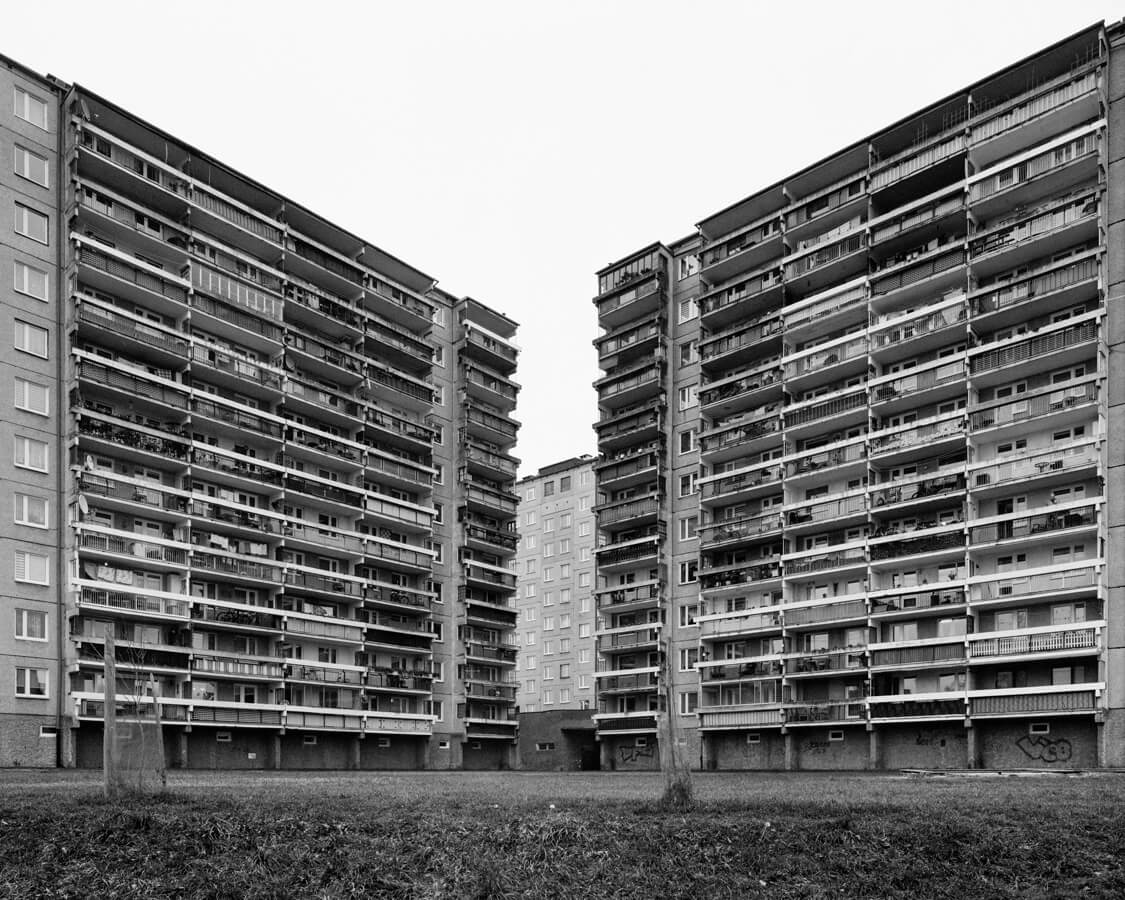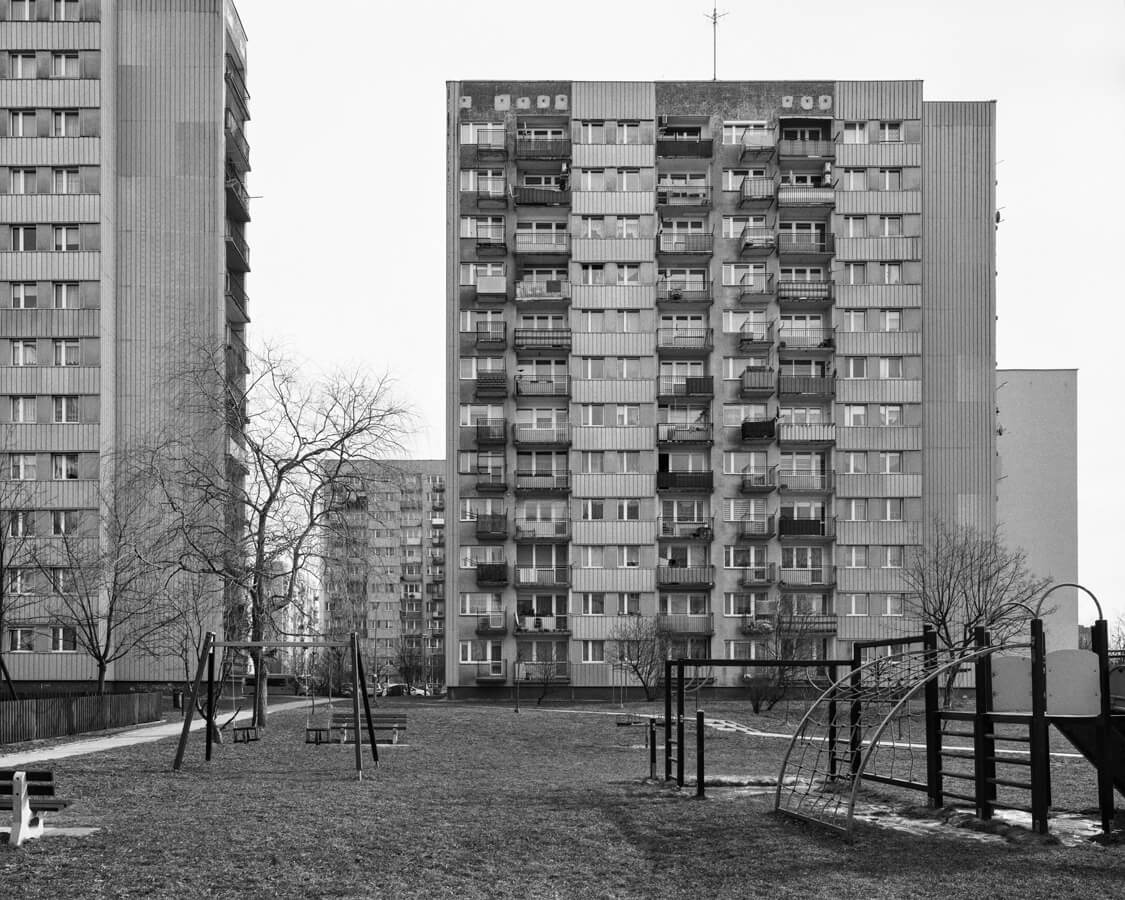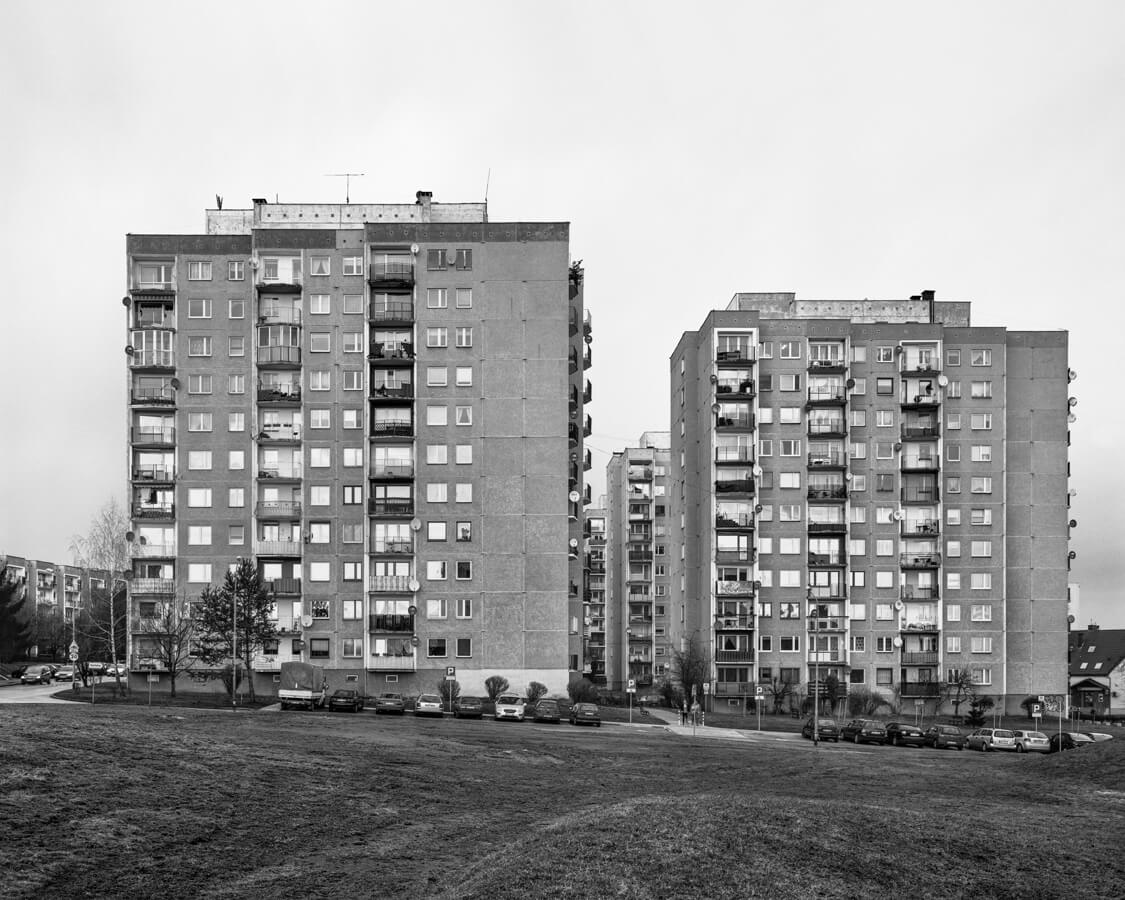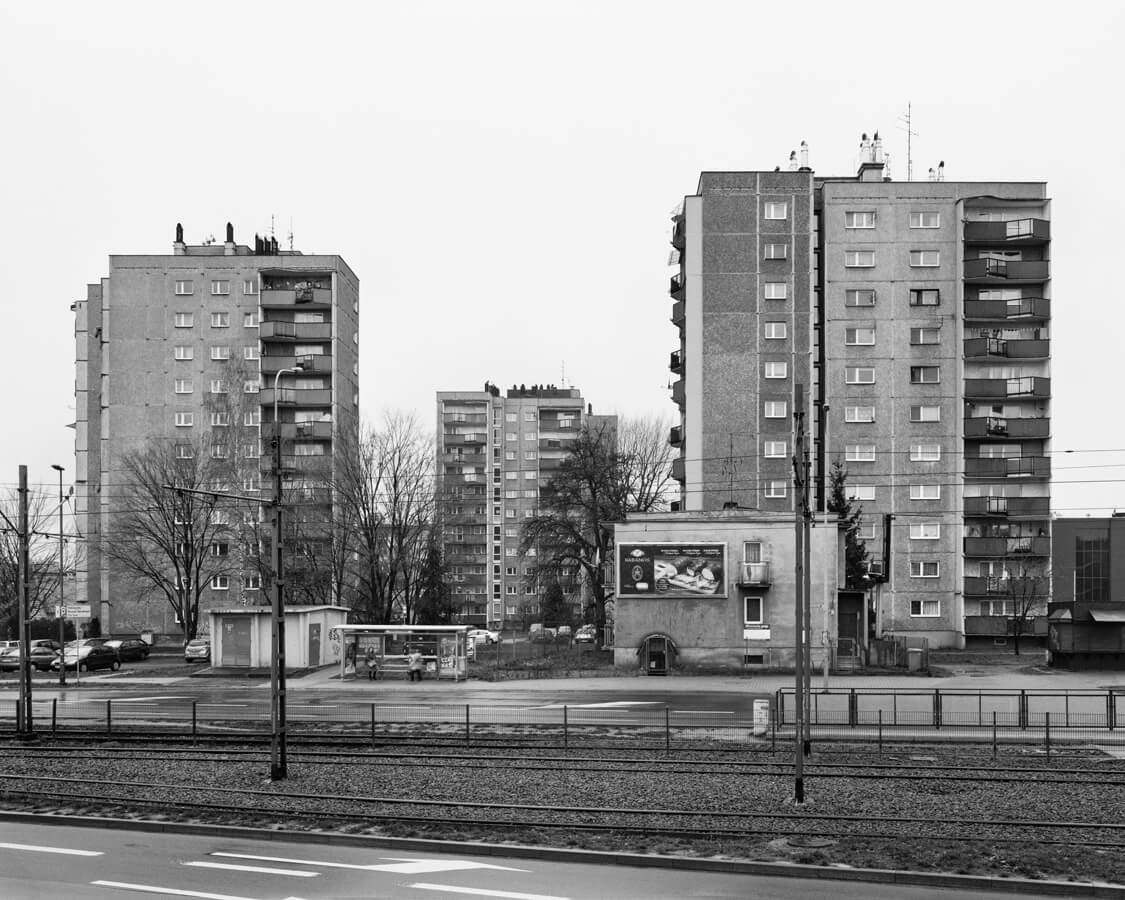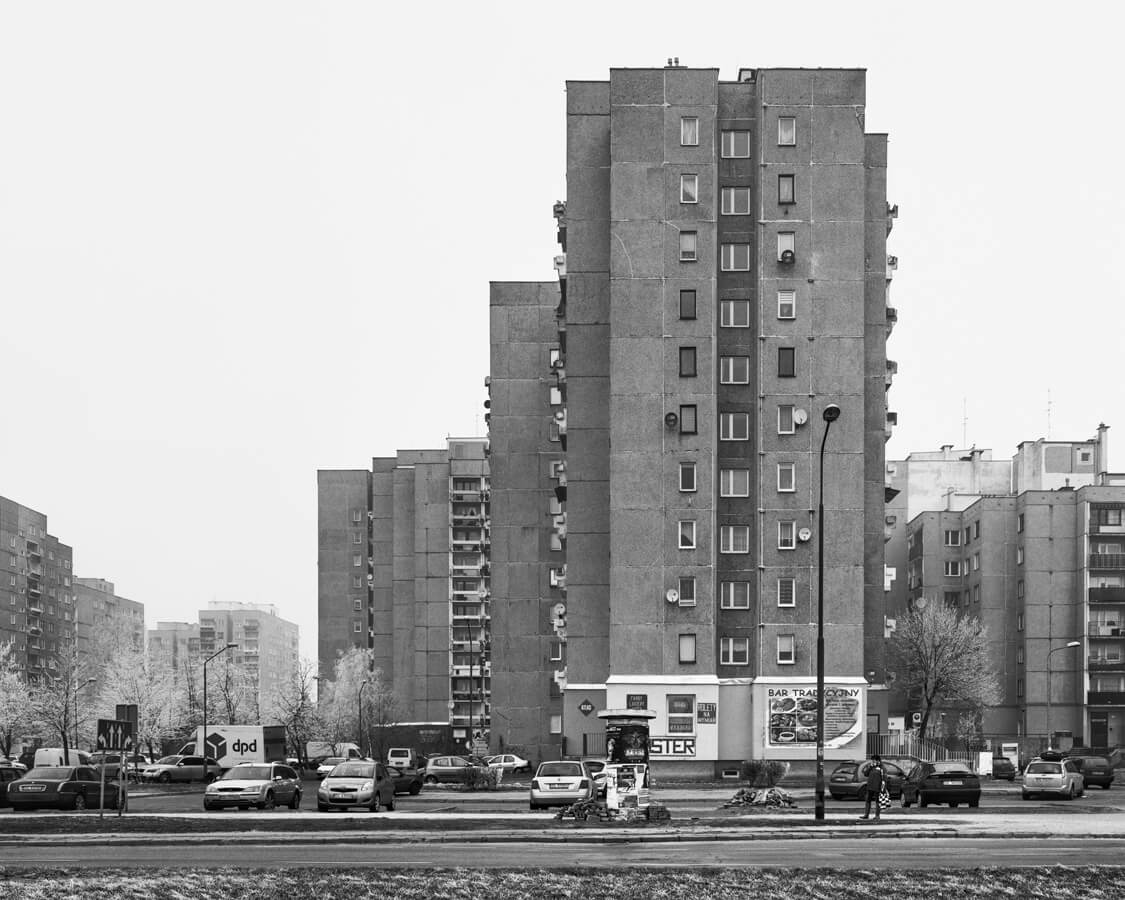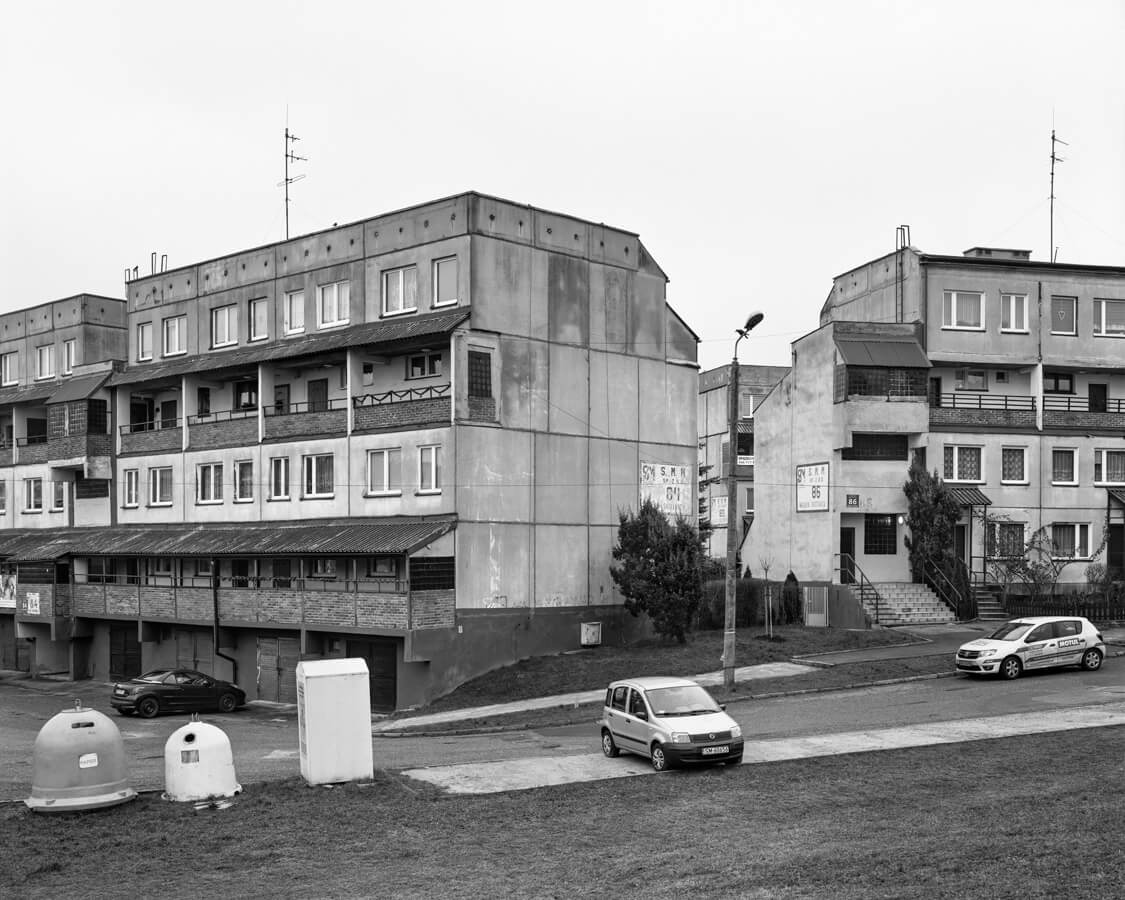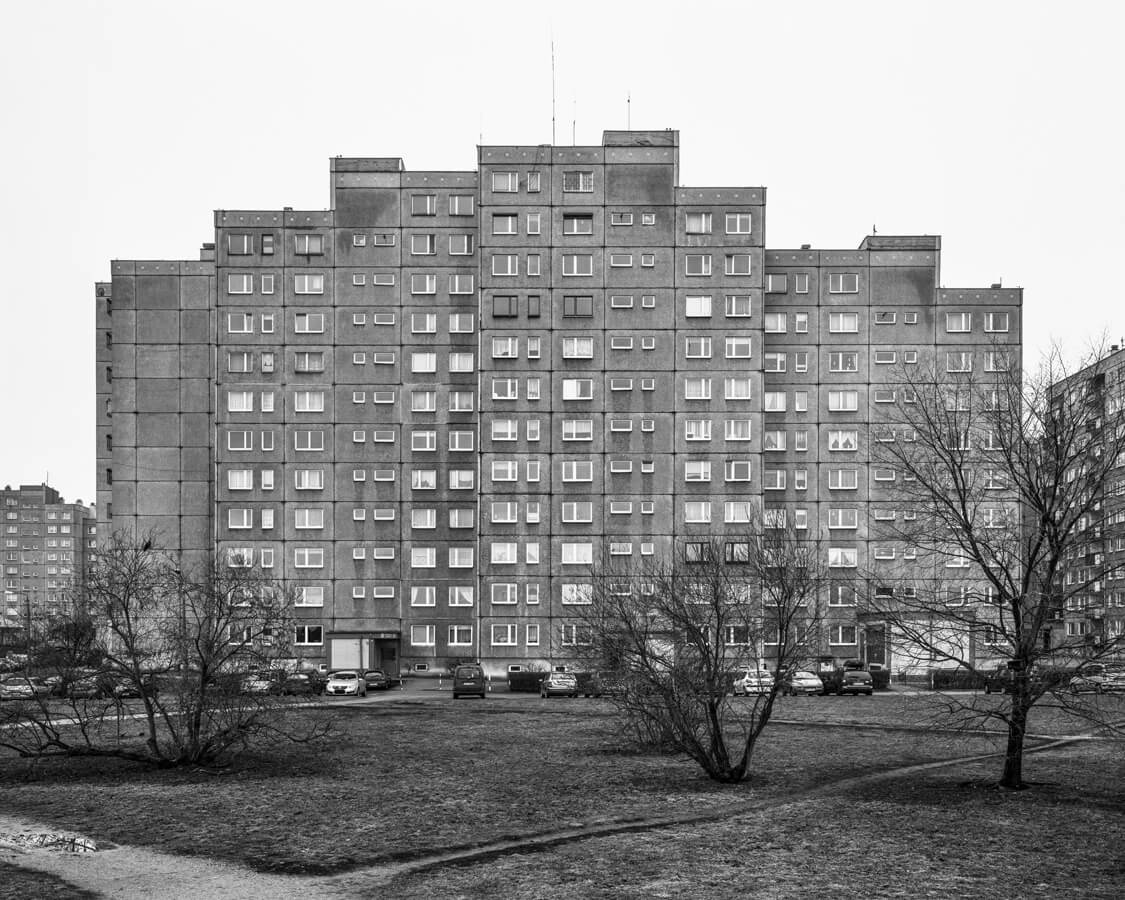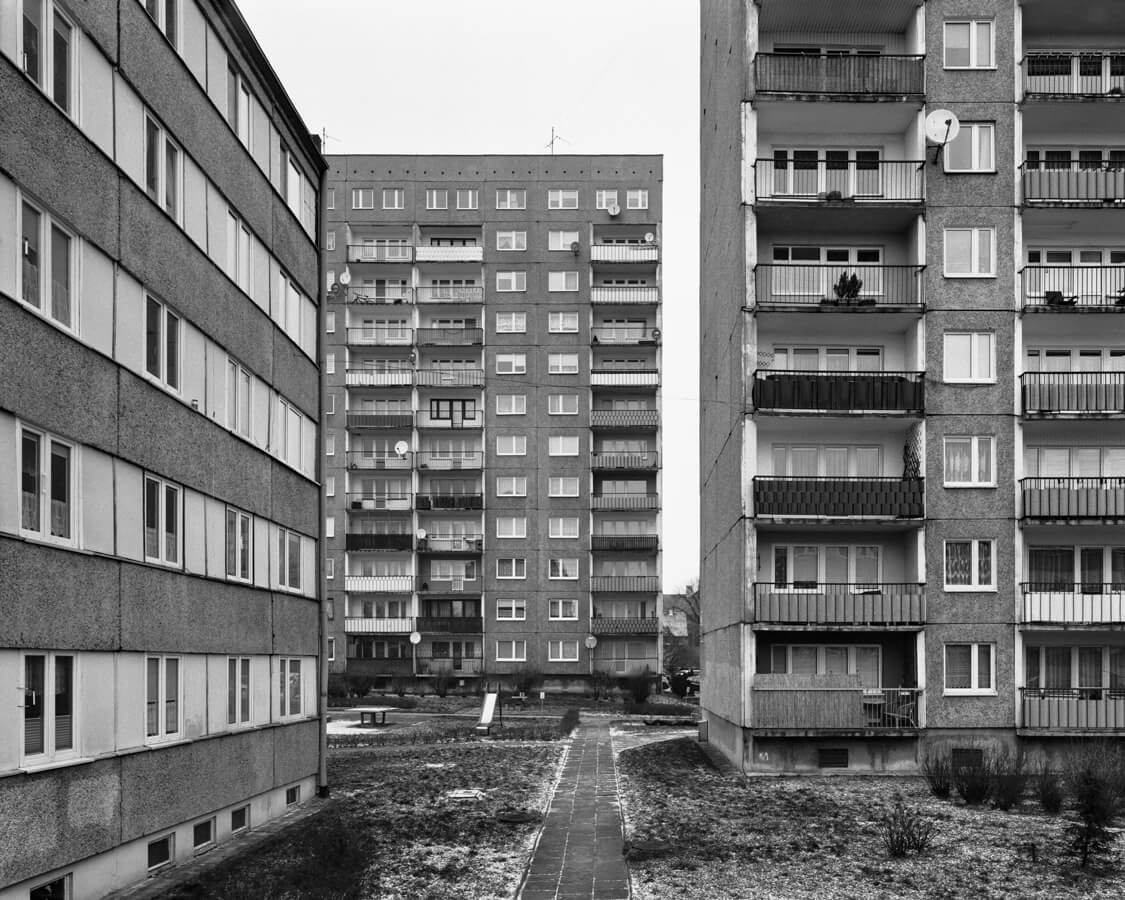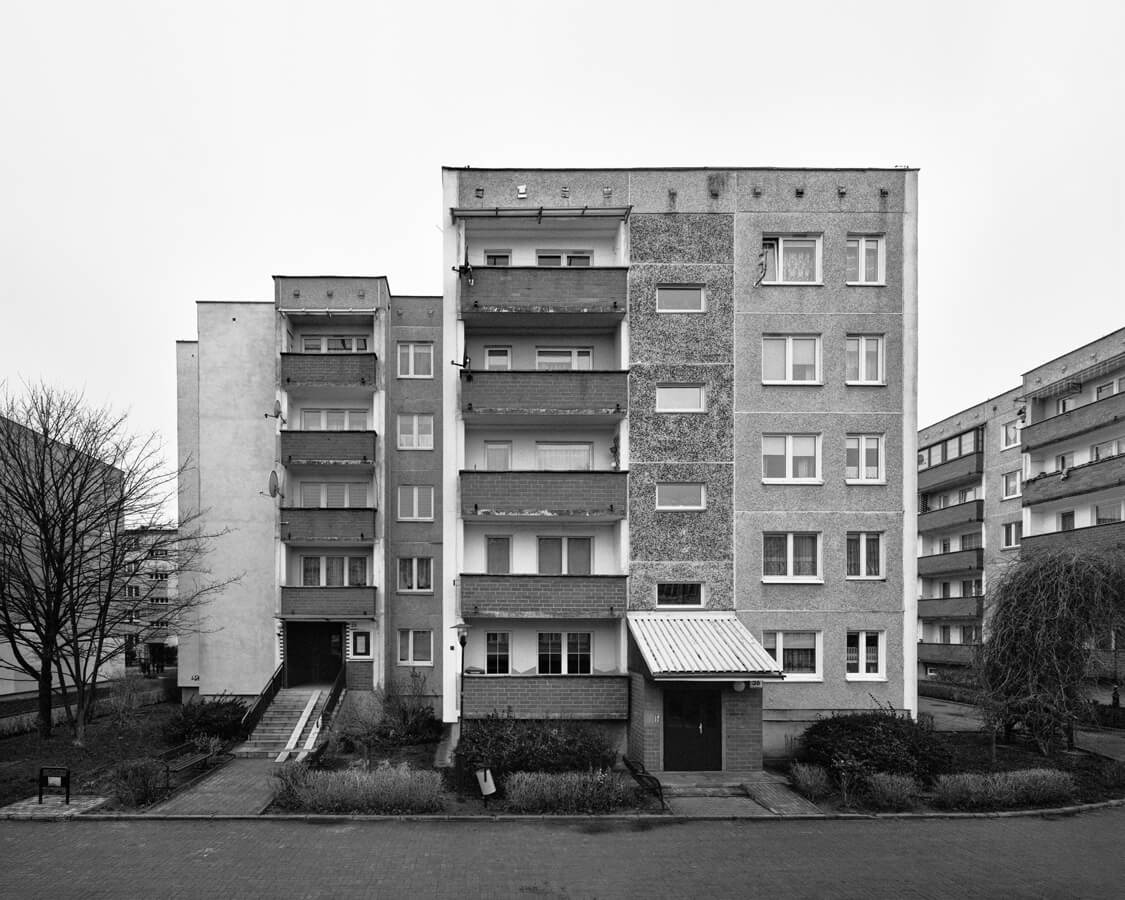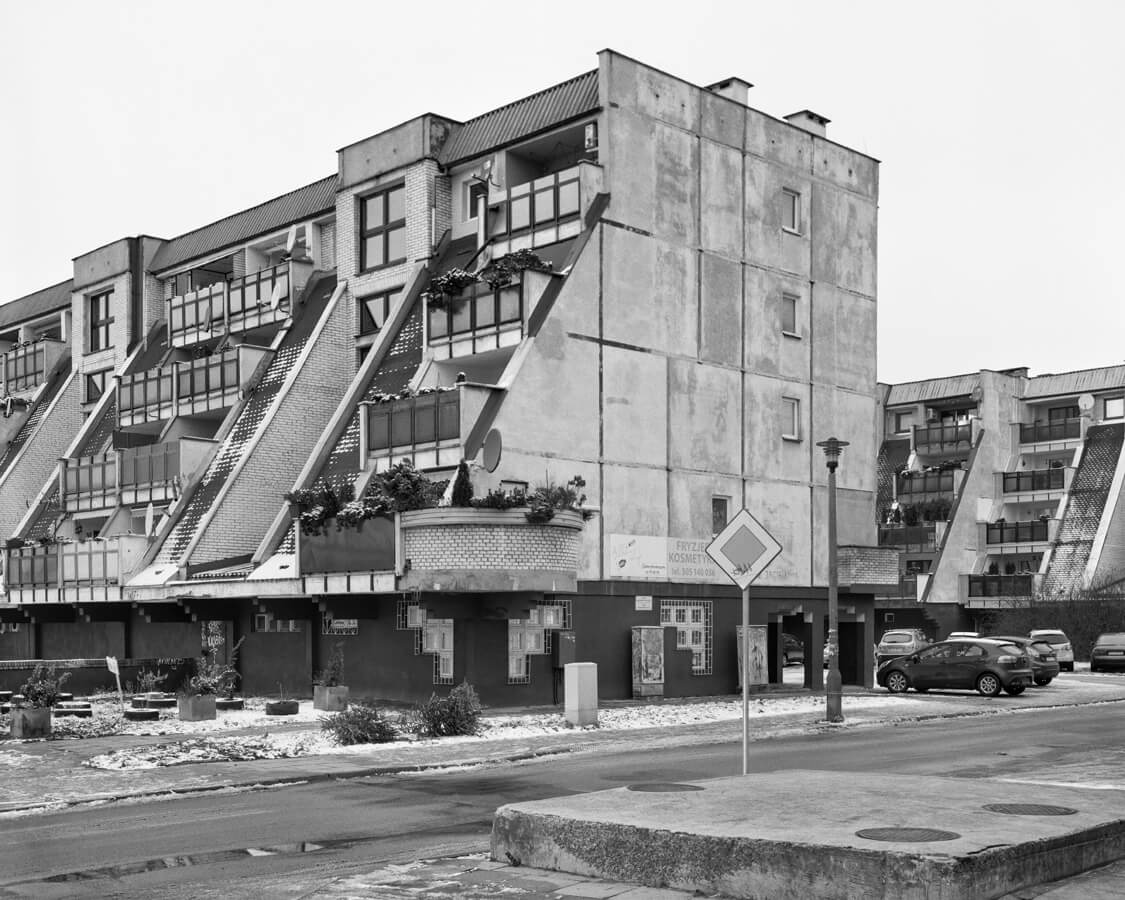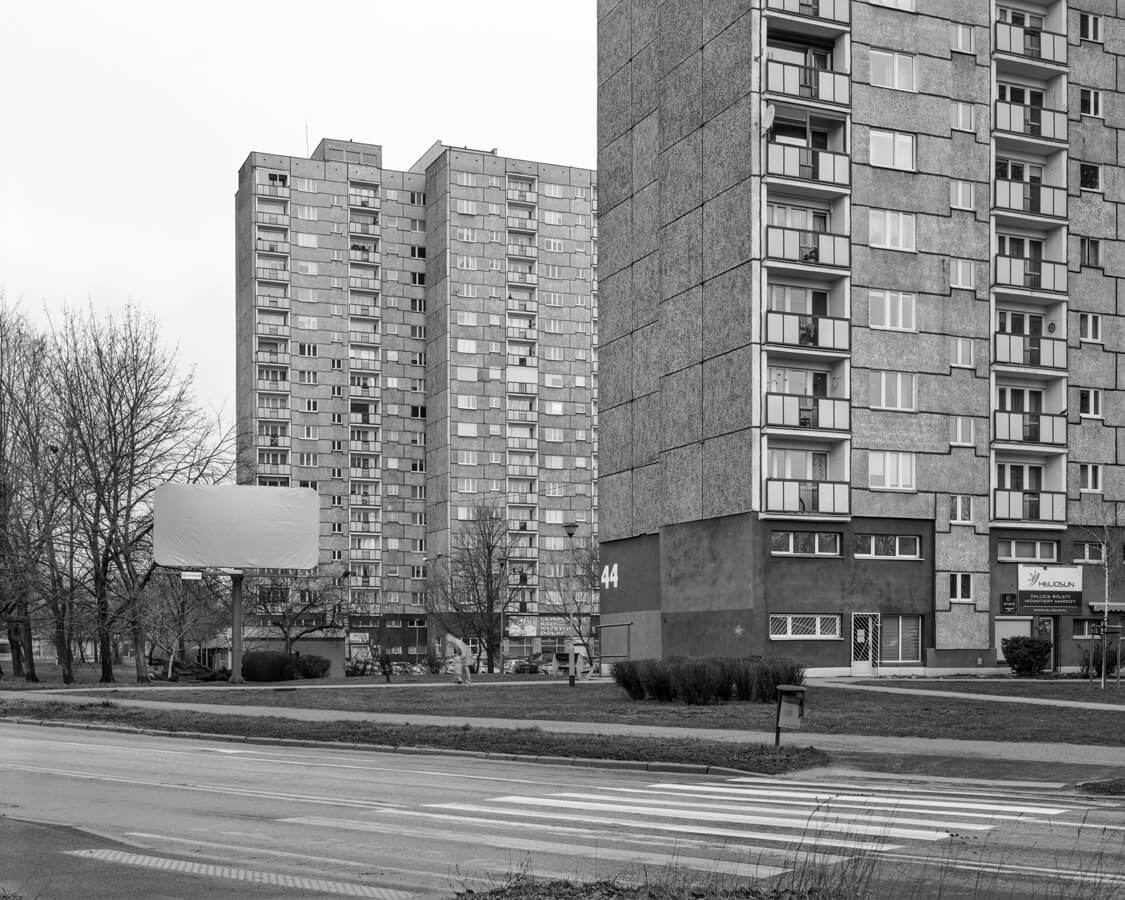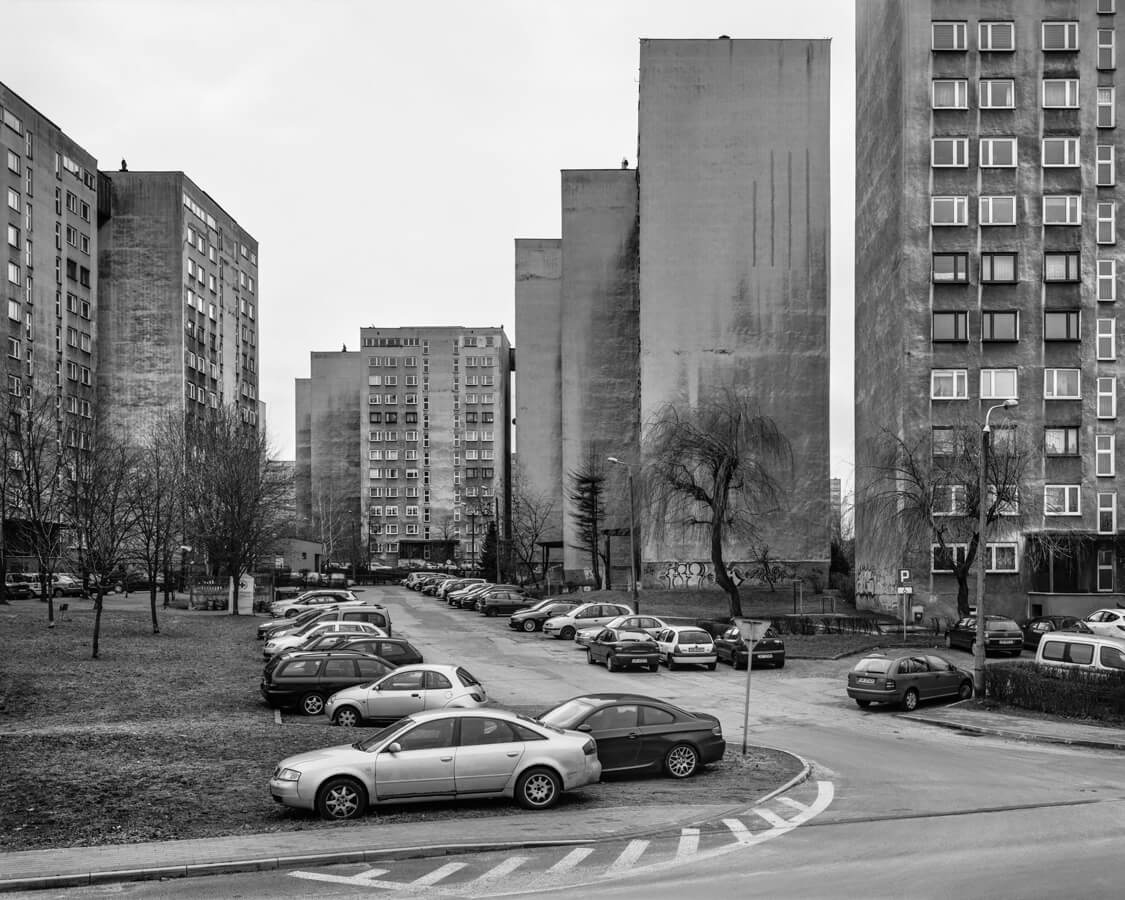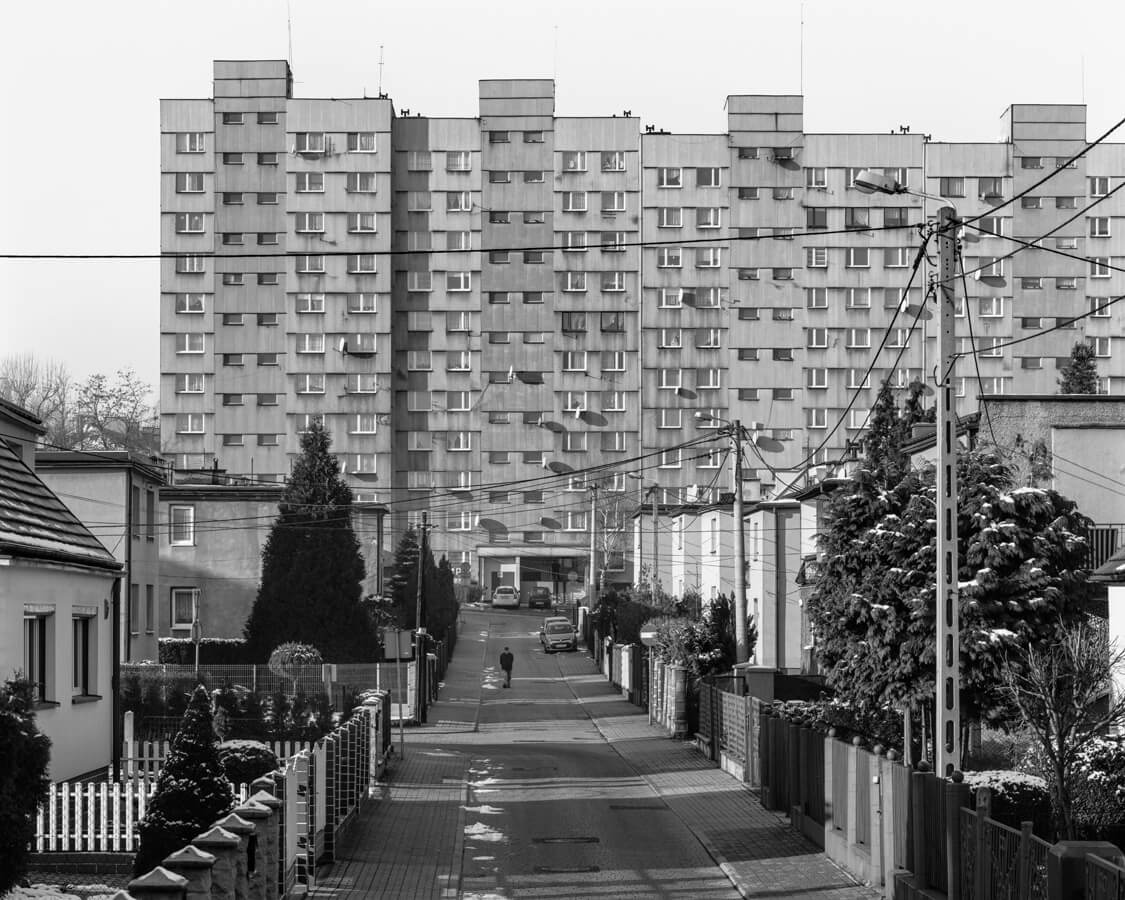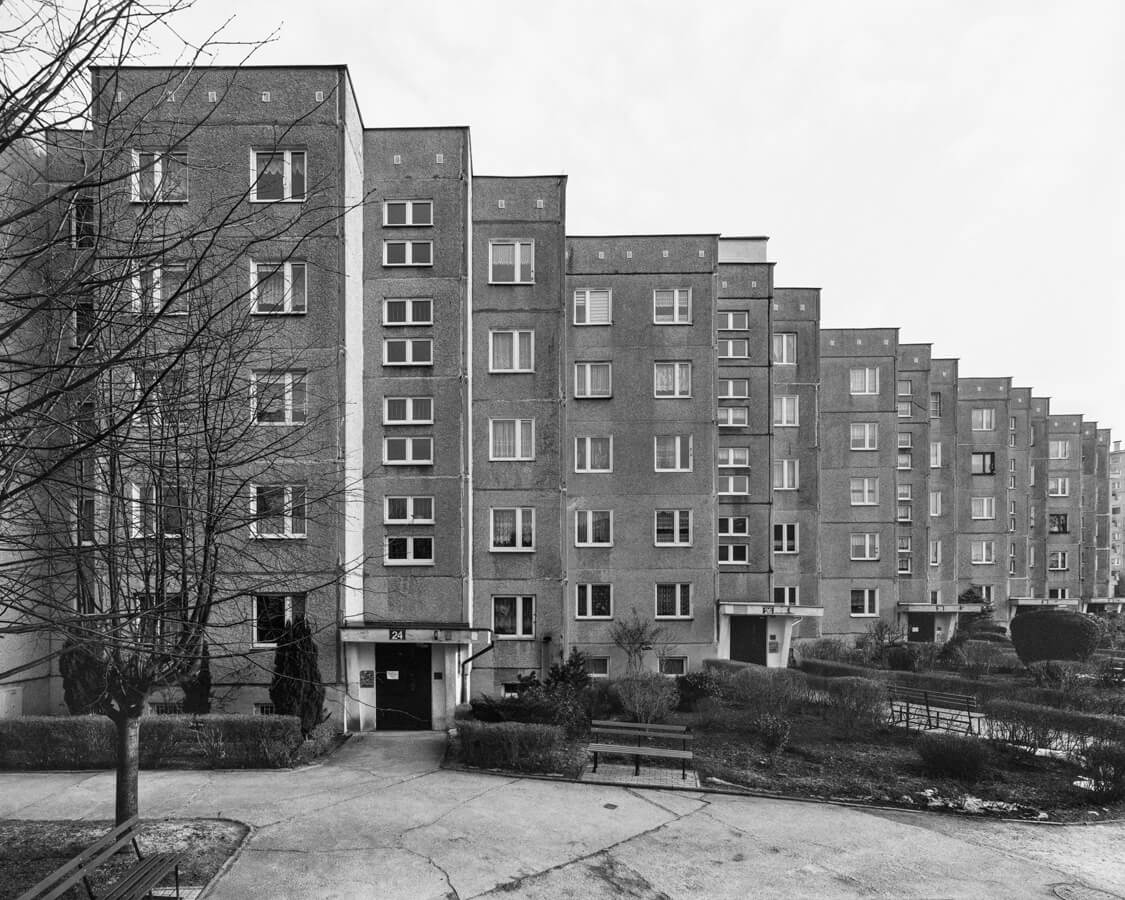concrete nudes
the disappearing surfaces of socialist mass housing systems in poland
2015 — ongoing
There are more than 12 million citizens living in apartments built before 1990 as part of mass construction programs in Poland today. The system-constructed apartments were at first very popular. In contrast to pre-war buildings, the „concrete houses“ had offered a modern standard of facilities with a hot running water supply, central city heating, bathrooms, balconies and, in the case of multi-story structures, with an elevator. However, already before the political transformation in 1990, prefabricated housing estates had become known as monotonous and dehumanizing urban neighborhoods. Also the architecture of the buildings that formed the settlements was already subject to public critics in the late communist era. After the political change, a new geopolitical perspective led Polish society to look back on the age of socialism not only as a time of economic mismanagement, lack of democracy and a totalitarian regime, but also as a period of missing full sovereignty. At the same time, the heritage of mass housing from this period became widely perceived as a stereotype of the architectural idea of the overthrown socialist system, or defacto its architectural representation. For these reasons, architecture from the communist times, of which the largest part is made up of mass housing estates, is perceived as culturally and politically alien by part of the public. The image of the „concrete houses“ is also not improved by the fact that they do not adequately meet today’s energy standards. Thus, for more than two decades, residential buildings built before 1990 are being massively „thermo-modernized.“ As a result, just as quickly as they were built, the controversial aesthetics of their facades are disappearing from the landscape of Polish cities and towns.
„Concrete Nudes“ is an ever-growing photographic archive documenting examples of mass housing programms in Poland from 1960-1990. The photographs are taken only of buildings that are in their original, unmodernized condition. The photographs are intended to preserve in a visual medium an authentic illustration of this architectural heritage. Their purpose is also to provoke questions about our aesthetic perception and acceptance of controversial forms of architecture. The documentation is additionally intended to allow a comparison of architectural, engineering and urban planning solutions, which, despite tight design corsets, are characterized by significant diversity, not least with regard to geographic criteria.
The documentation is made using a hybrid photographic process. The motifs are photographed with a plate camera on large-format black-and-white negatives, which are then scanned and digitalized.
concrete nudes
the disappearing surfaces of socialist mass housing systems in Poland
2015 — ongoing
There are more than 12 million citizens living in apartments built before 1990 as part of mass construction programs in Poland today. The system-constructed apartments were at first very popular. In contrast to pre-war buildings, the „concrete houses“ had offered a modern standard of facilities with a hot running water supply, central city heating, bathrooms, balconies and, in the case of multi-story structures, with an elevator. However, already before the political transformation in 1990, prefabricated housing estates had become known as monotonous and dehumanizing urban neighborhoods. Also the architecture of the buildings that formed the settlements was already subject to public critics in the late communist era. After the political change, a new geopolitical perspective led Polish society to look back on the age of socialism not only as a time of economic mismanagement, lack of democracy and a totalitarian regime, but also as a period of missing full sovereignty. At the same time, the heritage of mass housing from this period became widely perceived as a stereotype of the architectural idea of the overthrown socialist system, or defacto its architectural representation. For these reasons, architecture from the communist times, of which the largest part is made up of mass housing estates, is perceived as culturally and politically alien by part of the public. The image of the „concrete houses“ is also not improved by the fact that they do not adequately meet today’s energy standards. Thus, for more than two decades, residential buildings built before 1990 are being massively „thermo-modernized.“ As a result, just as quickly as they were built, the controversial aesthetics of their facades are disappearing from the landscape of Polish cities and towns.
„Concrete Nudes“ is an ever-growing photographic archive documenting examples of mass housing programms in Poland from 1960-1990. The photographs are taken only of buildings that are in their original, unmodernized condition. The photographs are intended to preserve in a visual medium an authentic illustration of this architectural heritage. Their purpose is also to provoke questions about our aesthetic perception and acceptance of controversial forms of architecture. The documentation is additionally intended to allow a comparison of architectural, engineering and urban planning solutions, which, despite tight design corsets, are characterized by significant diversity, not least with regard to geographic criteria.
The documentation is made using a hybrid photographic process. The motifs are photographed with a plate camera on large-format black-and-white negatives, which are then scanned and digitalized.



